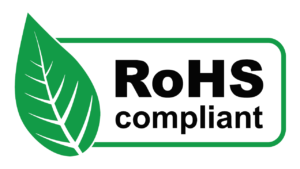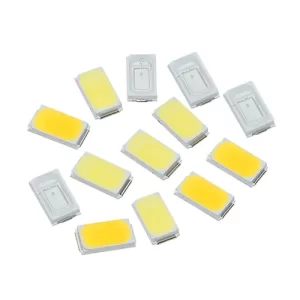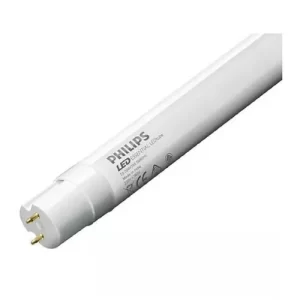
The phasing out of fluorescent lighting marks a significant milestone in the global transition towards more energy-efficient and environmentally friendly lighting solutions. Starting from September 2023, T8 fluorescent lamps will be banned, following the amendments to the Restriction of Hazardous Substances (RoHS) directives. This article explores the reasons behind the ban, the impact on industries, and the alternatives available, with a particular focus on the advantages of LED lighting.
The End of Fluorescent Tubes: RoHS Directives

The decision to ban T8 fluorescent lamps and other inefficient light sources is driven by the need to adopt more energy-efficient technologies. The RoHS directives, updated in the spring of 2023, set stricter standards for lumens-per-watt efficiency that fluorescent technology fails to meet. Moreover, fluorescent lamps contain small amounts of mercury, a hazardous substance that poses significant environmental and health risks.
Fluorescent tubes and energy-saving lamps are classified as hazardous waste due to their mercury content. Their disposal is more complicated compared to traditional incandescent bulbs, necessitating special handling and recycling processes. The ban aims to reduce the environmental burden associated with the disposal and accidental breakage of these lamps.
How Florescent tubelights works ?
Global Response to Fluorescent Lighting Ban

The move to ban fluorescent lighting is not isolated to a single region but is part of a broader global initiative. In September 2022, California and Vermont led the way in the United States by banning the sale and distribution of compact fluorescent lamps (CFLs) and linear fluorescent lamps. California went further, eliminating linear fluorescent lamps up to 8 feet in length. The state has set January 1, 2024, as the date for prohibiting screw and bayonet-base CFLs, and January 1, 2025, for pin-based CFLs.
Canada’s environmental and health departments also proposed amendments to the Canadian Environmental Protection Act in late 2022. These amendments aim to prohibit the manufacture and import of various types of fluorescent lamps by December 31, 2023, and their sale by December 31, 2026.
The international community has also shown commitment to reducing mercury use through the Minamata Convention on Mercury, signed by 137 countries. This convention calls for the phase-out of CFLs by 2025, highlighting the global consensus on the need to transition away from fluorescent lighting.
Impact on Businesses and Industries

The ban on fluorescent lighting presents significant challenges for businesses and industries. Around 40 percent of companies still use T8 fluorescent lamps. With the discontinuation of supply from manufacturers, these companies must transition to alternative lighting solutions.
The switch to more energy-efficient lighting is not just an environmental imperative but also an economic one. Fluorescent lamps, although initially cheaper, have higher operational costs due to their lower energy efficiency and shorter lifespan compared to modern alternatives like LED lights.
The Rise of LED Lighting: A Sustainable Alternative

As fluorescent lighting is phased out, LED (Light Emitting Diode) technology emerges as the most viable and advantageous alternative. LED lights offer numerous benefits over fluorescent lamps, making them the preferred choice for both residential and commercial applications.
- Energy Efficiency: LED lights are significantly more energy-efficient than fluorescent lamps. They can save up to 80 percent of the energy previously consumed by incandescent bulbs. This substantial reduction in energy consumption translates to lower electricity bills and a smaller carbon footprint.
- Longer Lifespan: LEDs have a much longer lifespan compared to fluorescent lamps. While a typical fluorescent lamp may last around 10,000 hours, an LED can last up to 50,000 hours or more. This extended lifespan reduces the frequency of replacements, resulting in lower maintenance costs and less waste.
- Environmental Benefits: Unlike fluorescent lamps, LEDs do not contain hazardous substances such as mercury. This makes their disposal simpler and safer for the environment. The reduced energy consumption of LEDs also means fewer greenhouse gas emissions from power plants, contributing to climate change mitigation efforts.
- Better Light Quality: LED lights offer superior light quality with better color rendering and brightness control. They can be easily dimmed and customized to suit various lighting needs, enhancing the overall lighting experience in different settings.
- Instant On and Off: Unlike fluorescent lamps that require a warm-up period, LEDs provide instant illumination when switched on. This feature is particularly beneficial in environments where immediate lighting is essential.
- Durability: LED lights are more robust and durable compared to their fluorescent counterparts. They are resistant to shocks, vibrations, and external impacts, making them suitable for a wide range of applications, including outdoor and industrial use.
- Design Flexibility: LEDs come in various shapes, sizes, and colors, offering greater design flexibility. They can be used in creative lighting solutions and integrated into various fixtures, allowing for innovative and aesthetically pleasing lighting designs.
Transitioning to LED Lighting: Steps to Take

The transition from fluorescent to LED lighting requires careful planning and execution. Here are some steps businesses and individuals can take to make the switch smoothly:
- Conduct an Audit: Start by conducting an audit of your current lighting setup. Identify the types and quantities of fluorescent lamps in use and assess their energy consumption and maintenance costs.
- Evaluate LED Options: Research the available LED lighting options that can replace your existing fluorescent lamps. Consider factors such as brightness, color temperature, compatibility with existing fixtures, and overall cost-effectiveness.
- Plan the Transition: Develop a transition plan that outlines the steps and timeline for replacing fluorescent lamps with LEDs. Prioritize areas with the highest energy consumption or those that require frequent maintenance.
- Budget for the Transition: Allocate a budget for the initial investment in LED lighting. While LEDs may have a higher upfront cost, the long-term savings in energy and maintenance will offset the initial expenditure.
- Engage Professionals: Consider hiring lighting professionals or consultants to assist with the transition. They can provide expert advice on the most suitable LED solutions and ensure proper installation and integration.
- Recycle Responsibly: Ensure that the old fluorescent lamps are disposed of responsibly. Many regions have specific recycling programs for hazardous waste, including fluorescent lamps, to prevent environmental contamination.
- Educate and Train Staff: Educate your staff about the benefits of LED lighting and provide training on how to use and maintain the new lighting system effectively.
The Florescent tubelights ban marks a crucial step towards a more sustainable and energy-efficient future. The transition to LED lighting offers numerous benefits, including significant energy savings, reduced environmental impact, and improved lighting quality. As businesses and individuals embrace this change, they contribute to a greener planet while reaping the economic advantages of modern lighting technology.